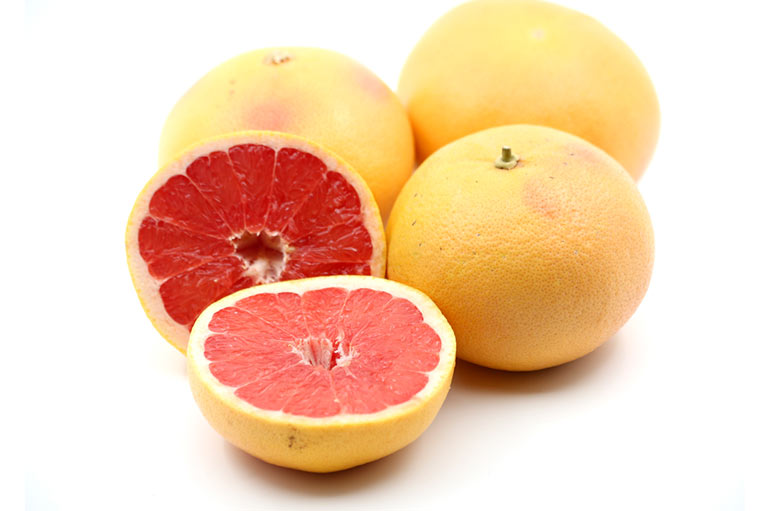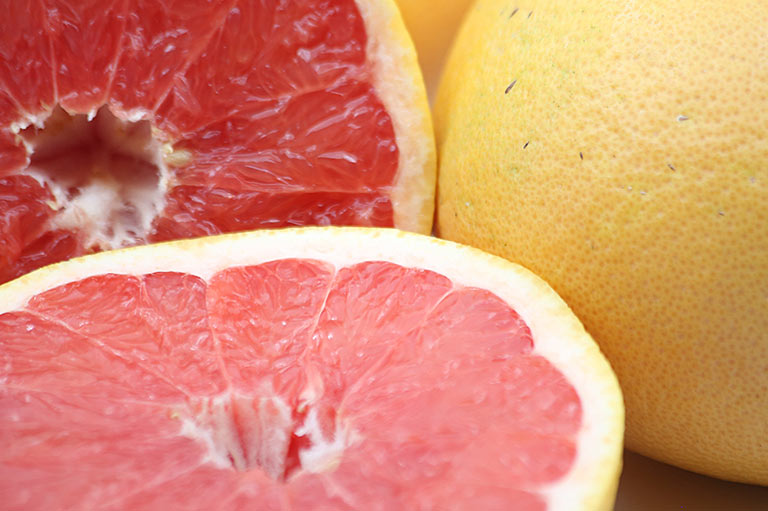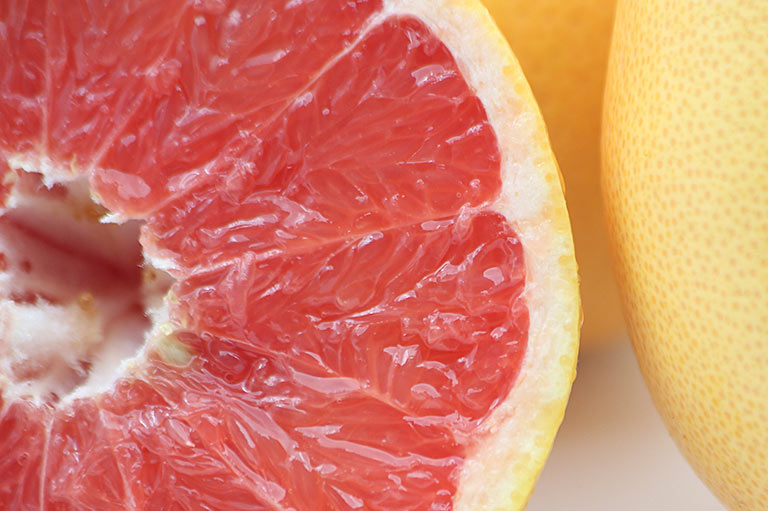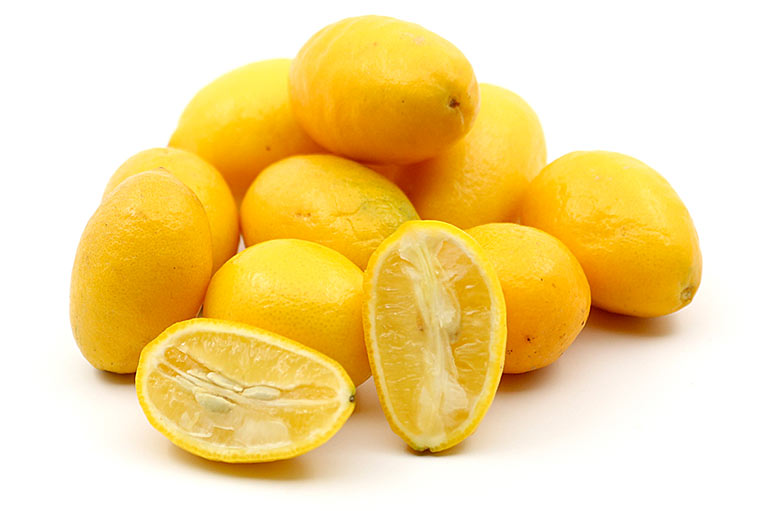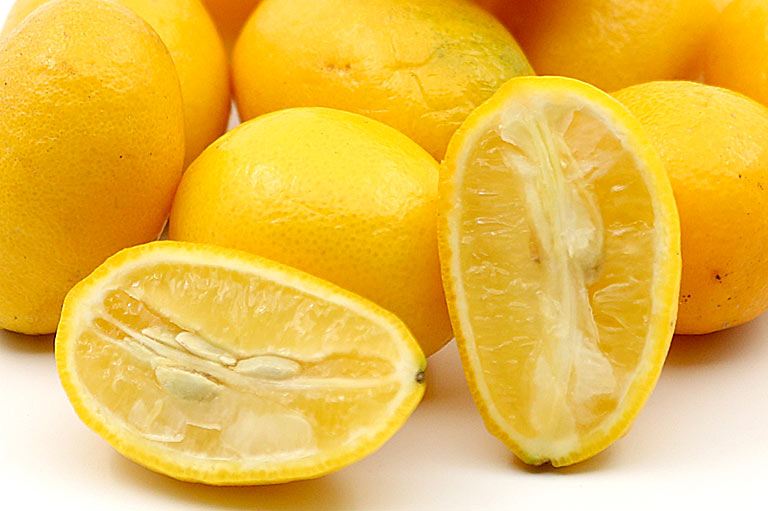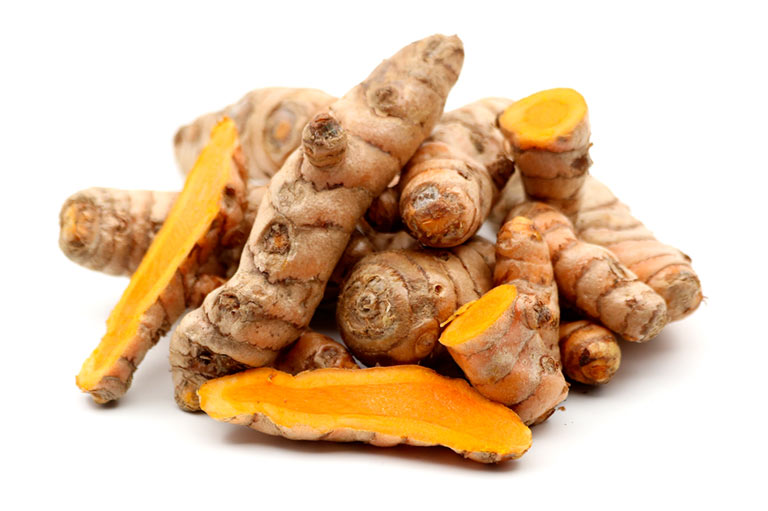February
This month is when most of our winter fruit reaches maximum production; it’s the middle of the avocado season, and a great time for grapefruit, kumquats and oranges. We also have a continuing supply of fresh vegetables, many of which are available year-round.
As well as fruit and vegetables, winter is when turmeric becomes available, which we sell as the fresh root. Have a look at our seasonal growing calendar below to find out more, and for information about this month’s featured products.
Grapefruit
Available November – May
The true origin of the grapefruit is unclear, though the most popular theory suggests it is the result of a spontaneous cross between the sweet orange and the pummelo, citrus fruits brought to the West Indies and grown by Spaniards from the 15th century onwards.
One whole grapefruit contains the full recommended daily intake of vitamin C and provides us with Vitamin A (beta-carotene), folic acid and minerals such as calcium and iron, as well as fibre. It also contains high levels of antioxidants.
Our main grapefruit season runs from December to April, though some varieties are also harvested a bit earlier in November, or later in May. Grapefruit, like most citrus fruits, is a versatile ingredient in the kitchen. Apart from being eaten whole or squeezed for the fresh juice – which is the most advisable way to take advantage of its nutrients – it can be used in juices, jams and sauces, and in both sweet and savoury cooking. Try it in a delicious salad with spinach!
Limequat
Available December – March
The limequat is citrus fruit, a hybrid of kumquat and key lime that was first produced in the early 1900s. It grows on a relatively small tree that can be harvested between December and March.
Limequats are about 3-4cm long. It is an interesting and versatile fruit, with an edible skin that can be eaten raw as well as cooked (if cooking remove the seeds, or they will add a bitter taste). The skin is sweet and like the kumquat it has a tart pulp, with a flavour similar to lime.
Limequats are often used in baking, for jams or preserves, and are an ideal raw ingredient in salads, juices, smoothies or cocktails. Cooked, it can be used as a seasoning or garnish for main dishes and appetisers. It’s great flavour to add to fish, but we recommend trying them fresh with a little olive oil and salt – they’re delicious!
Turmeric
Available December – March
Originating in India, the medicinal and culinary use of turmeric dates back over 4,000 years. Curcuma longa is part of the ginger family and grows as a flowering plant of up to one metre high, which produces cylindrical orange rhizomes below ground that are harvested for the spice.
Turmeric has historically played a major role in classical Indian and traditional Chinese medicines, being prescribed to help with gastrointestinal and liver problems, as an anti-inflammatory, or for treating colds, allergies, skin problems and a range of other conditions. It is an almost magical plant!
Turmeric rhizomes should be kept in a cool, dry and dark place; a paper bag or container in the coolest part of the fridge is ideal. Make sure they stay dry to avoid mould developing, and don’t come into contact with odours from other foods.
